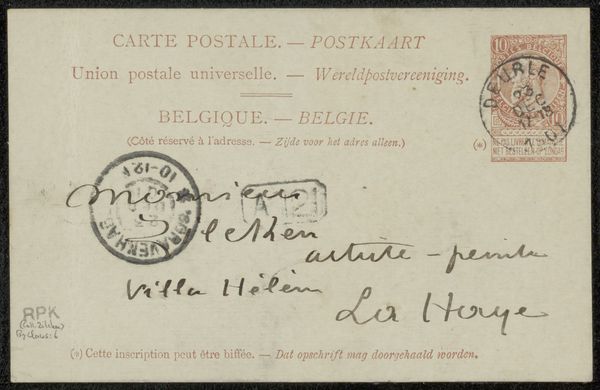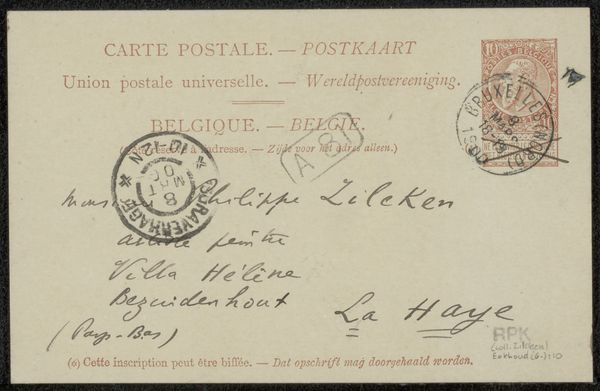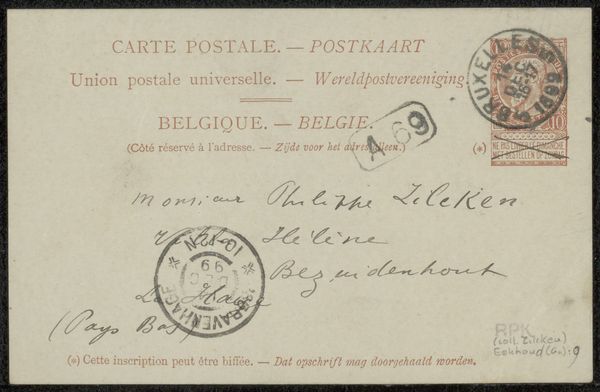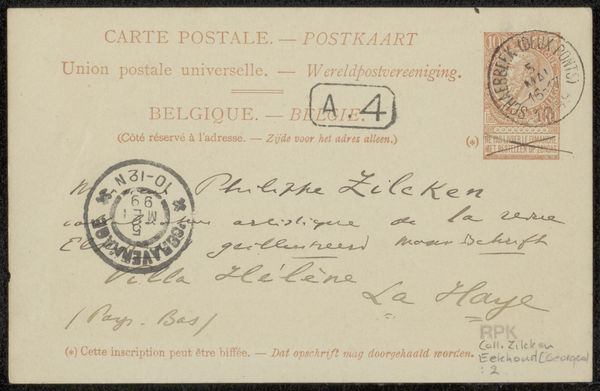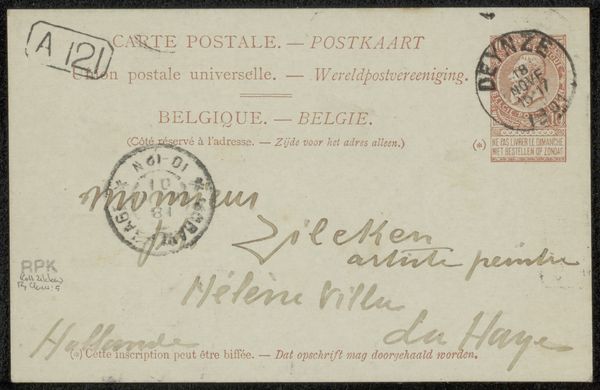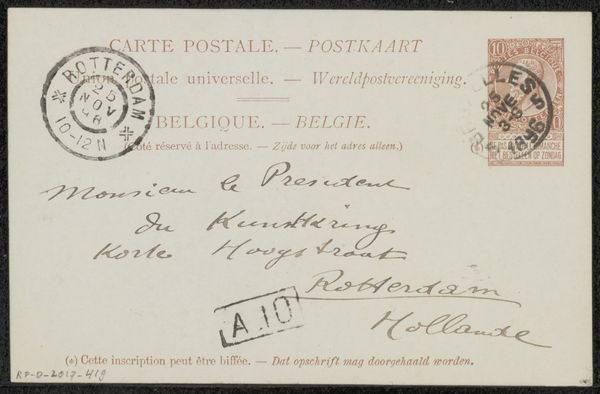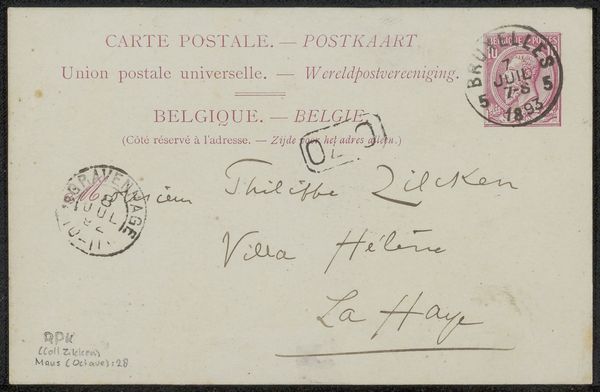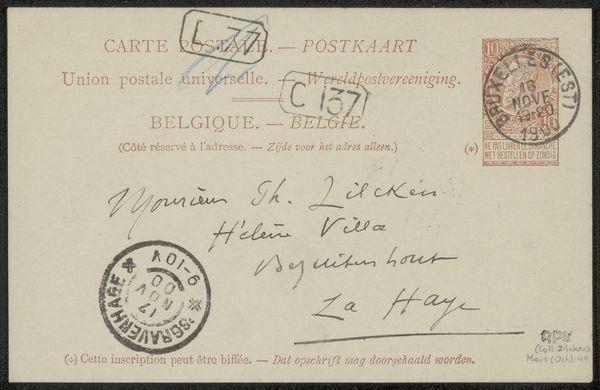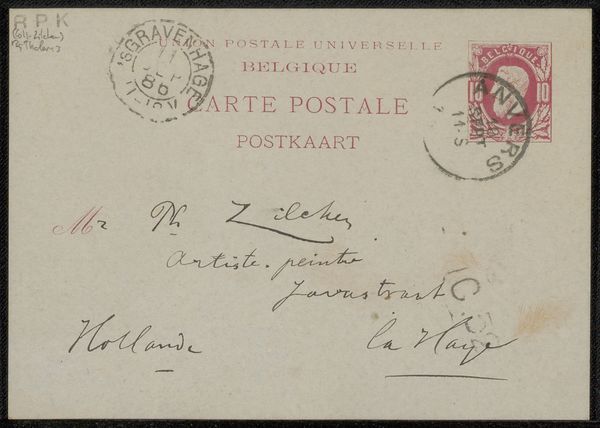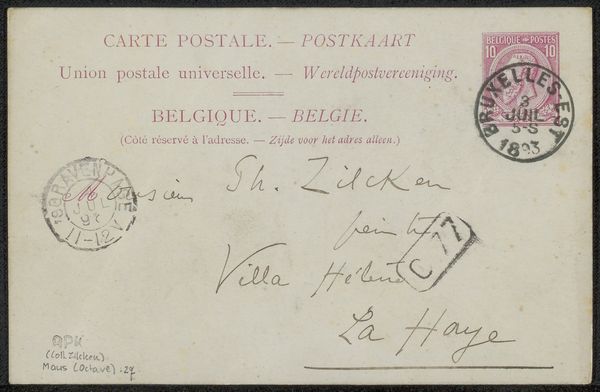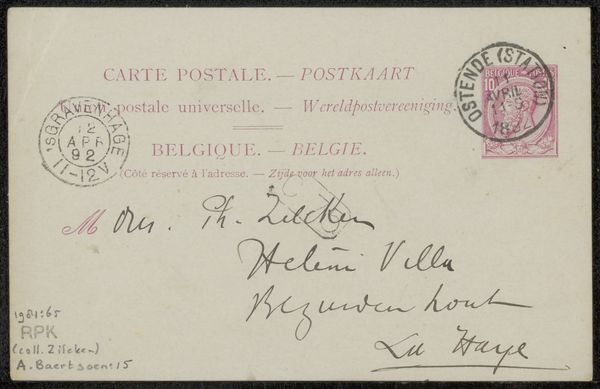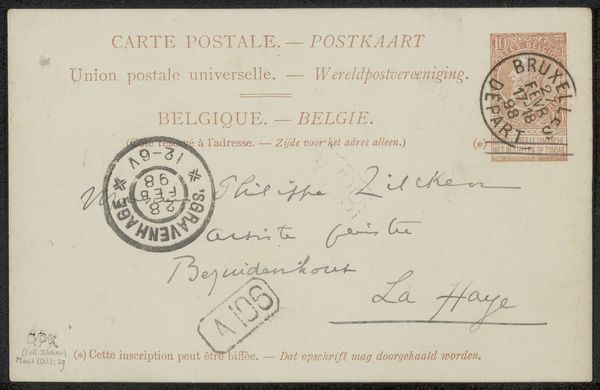
paper, pen
#
portrait
#
aged paper
#
hand-lettering
#
old engraving style
#
hand drawn type
#
hand lettering
#
paper
#
personal sketchbook
#
hand-drawn typeface
#
pen work
#
sketchbook drawing
#
pen
#
sketchbook art
Copyright: Rijks Museum: Open Domain
Editor: Here we have a postcard addressed to Philip Zilcken, possibly dating from around 1900 to 1924, created on paper using pen. The aged paper gives it a ghostly appearance, with elegant lettering. How do you interpret this work, especially considering its historical context? Curator: This postcard speaks volumes about connection, class, and communication in a rapidly changing era. The very act of sending a 'carte postale' highlights a growing literacy and interconnectedness. Who was Philip Zilcken and what can be gleaned from Eekhoud directing the postcard to Zilcken c/o Villa Heline at the Hague? This glimpse into Zilcken’s correspondence network gives a unique perspective on gendered spheres and power structures of the artistic world. What do you notice about the handwritten text and the official stamps? Editor: The stamps indicate its journey, while the handwriting feels incredibly personal and contrasts the formal postal service markings. I wonder about the intersection of private communication within a public system. Curator: Exactly. How might we consider the power dynamics embedded in the act of correspondence, especially across social classes? Postcards became increasingly ubiquitous. They facilitated not only artistic exchange but also participation in commercial advertising and, sometimes, political commentary. Considering all of these factors is this simply correspondence? Editor: It is really fascinating how much history can be found in such a simple object! I now have a completely new appreciation for postcards! Curator: Indeed. By looking at art in the context of societal frameworks we reveal unseen levels of meaning. This dialogue highlights why understanding historical context gives critical depth to our encounters with the past.
Comments
No comments
Be the first to comment and join the conversation on the ultimate creative platform.
